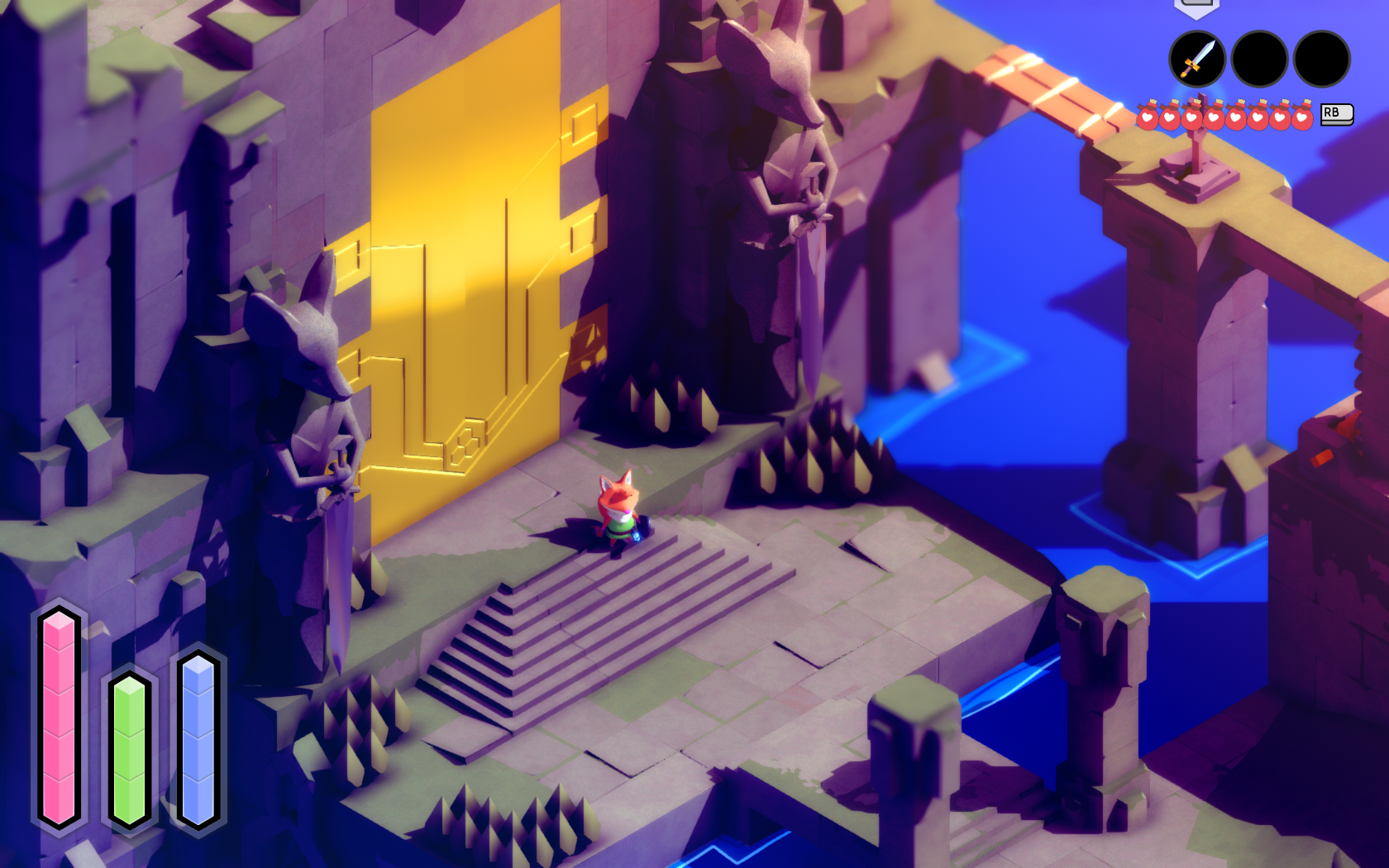NOSTALGIA DONE RIGHT: TUNICS MANUAL
It is no Secret that Tunic is so much more than just another Zelda-like. What on first look, looks like a cute semi-top-down zelda-like with a fox turns out to be so much more and it deserves all the praise it gets! Out all those praised aspects of the game, for me the most outstanding is the In-Game Manual.
But first things first, for everyone that hasn't played Tunic yet, let me give you a brief introduction to the Game. Tunic is an action-adventure game heavily inspired by the older top-down Zelda games. You play as a Fox fighting and puzzling your way through a mysterious world full of ruins with a unique language invented for the Game (so you will most likely don't understand it as a player in your first run). At first you do not know anything about the game, it's mechanics and the world around you. But as you play and explore the world you will find manual pages located across the world, that will one by one build your in-game manual. The pages explain all game aspects one by one in small increments, each one giving just enough hints to get an idea where to go next or foreshadow the next story event. Yet, what is best about this manual is not only the gameplay impact, but it's presentation. You do not collect Tutorial or explanation dialog boxes, but assemble a physical in-game manual booklet you can flip through. This booklet is completely filled with notes and scribbles of 'a person' that used this manual during their playthrough before, seemingly trying to piece all these informations together. In reality these notes where of course put into the Game by the developers.
A lot of Games in the last years tried to bring us back some of the Nostalgia we experienced with games in times when we couldn't search the Internet for solutions. Most games attempt to invoke this feeling through graphics or game mechanics that we know from those times or are inspired by that look and feel. For me, Tunic was the first Game that really delivered that nostalgia while still feeling fresh, new and exciting. It did not feel old, in fact quite the opposite: it also delivered new interesting puzzle mechanics you discover through the manual pages you collect during the playthrough.
Tunics use of a made up language consisting of glyph-like symbols on a connected line made me feel like I was 5 again playing Pokemon, being in an age where I could not fully read yet and thus wondering what exactly those signs and people I met actually wanted from me. It also reminded me a bit of the incognito and braille secrets hidden in generation 2 and 3 of pokemon. Since then, no other game was able to make me feel that way again so far.
We also really need to acknowledge how much love went into the design of those manual pages. I always was a huge fan of these illustrated game manuals that were part of every physical game and these are something I really miss when buying games nowadays. I totally understand why it is not necessary anymore to put money and time into developing manuals. Nonetheless I miss that this part of graphic design culture is no more. I remember vividly spending hours flipping through those manual pages, being in awe at the character illustrations and little tips and tricks. So naturally I was really happy at doing the same in Tunic. The game even acknowledges this with their page switching animation being exactly such a page flipping. Just as if the player looks into a real manual.
Much work went into these manual pages, to give them an analog feeling. As the developer stated in interviews ( f.e. this noclip doku) an analogue blank booklet was created and crumpled just to give it an used look. This booklet was then scanned and used as a base for the graphic design, maps and illustrations that went into the digital in-game booklet. Furthermore all pages have (as it seems) a dotted texture to further enhance the analog paper feeling.
On the pages throughout the manual, you find various notes that where seemingly hand written with a ballpoint pen or a digital pen replicating one such pen. These make it feel like you have just gotten this manual from a friend that already played the game and left some notes in their booklet. This again reminds me of scribbles I have done on my manual booklets. I hope you can see just how much work has been put into the manual pages just to ensure the player really feels as if he flips through a real instruction booklet. Also I am a huge fan of all the illustrations that where solely created for this booklet, depicting the cute fox protagonist and the various inhabitants of the world in vivid detail.
All of these points, actually make it feel rewarding to go and search those manual pages. It's not just the information and world exposition you get and the many cleverly hidden secrets you discover thanks to them, but also the beautiful illustrations and maps and small carefully placed little notes throughout the booklet that tell you just enough to discover the next part of your journey or discover the next cleverly hid game mechanic. This manual actually feels like it's more than just a manual, it is actually part of the players journey, all while perfectly capturing that feeling of printed game manuals.
I guess for me it is one of the most beautiful tools handed to the player in a game that I have witnessed in my gaming journey so far. I'm also extremely happy that the developers really are offering a printed version of the manual right now that I happily preordered.
So much for the first little Game Love letter on this blog. I'm sure more will follow. :)







